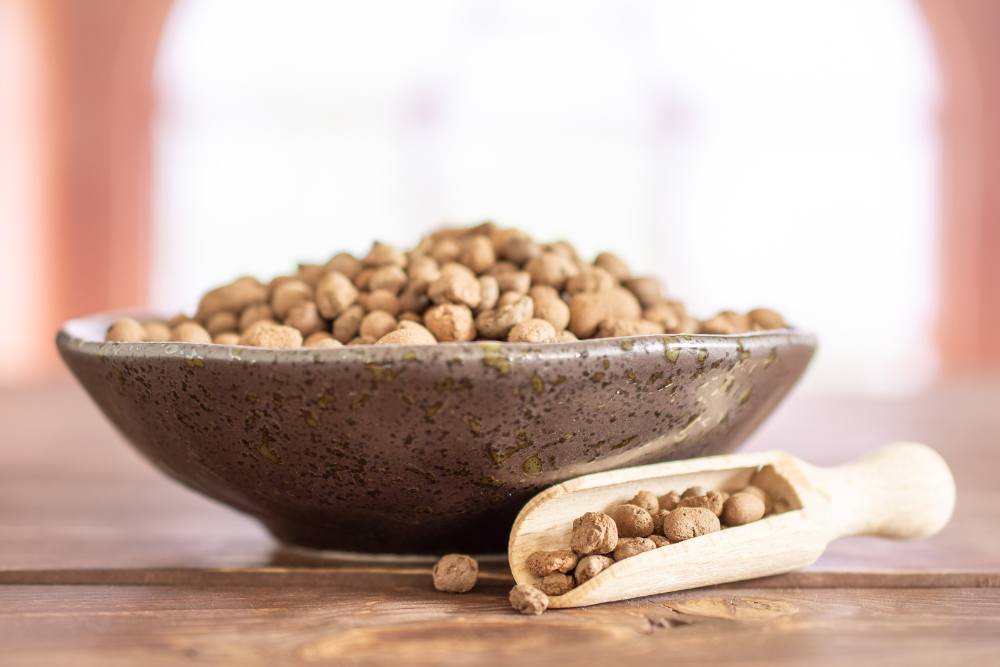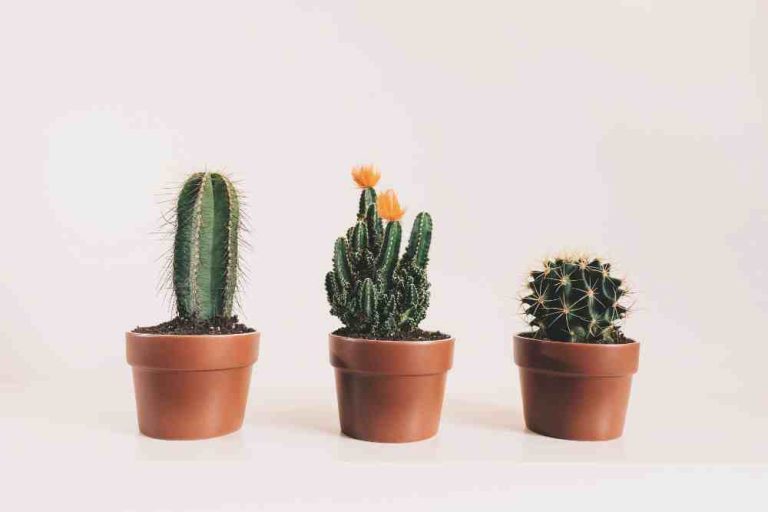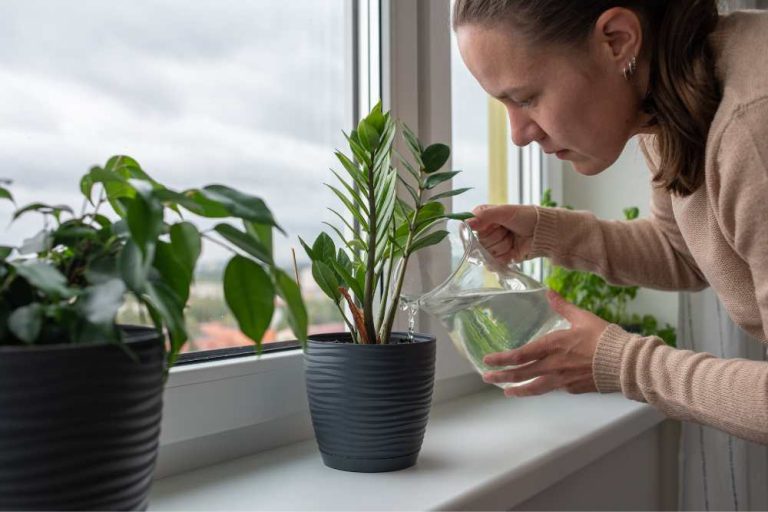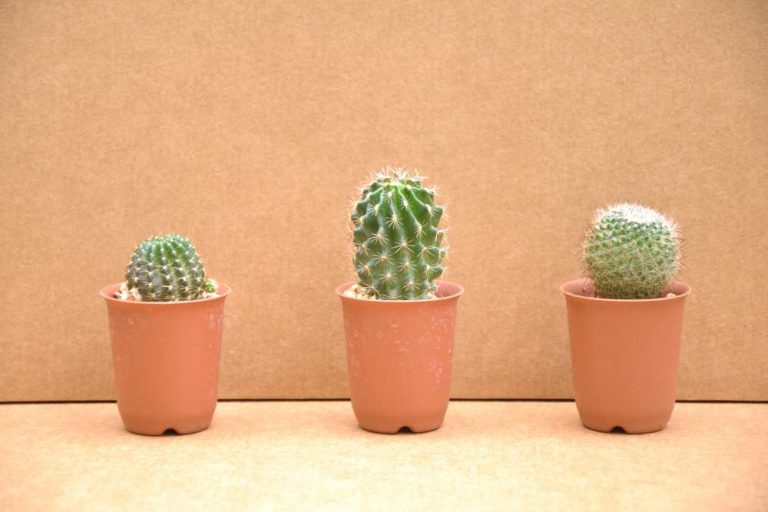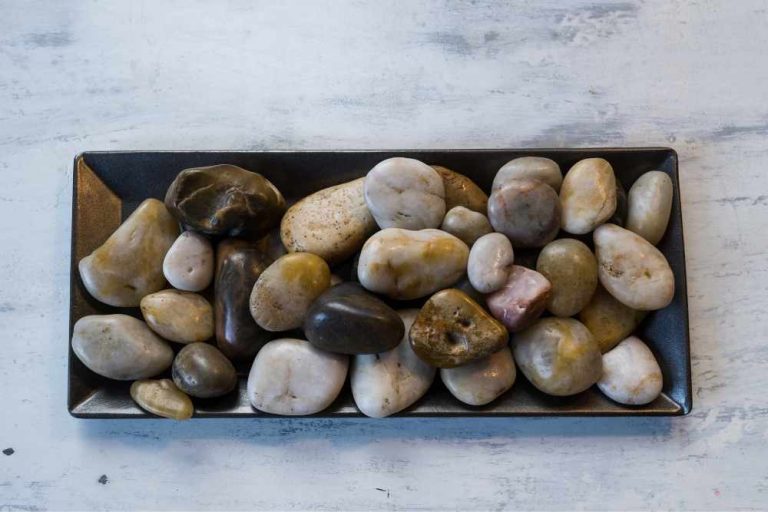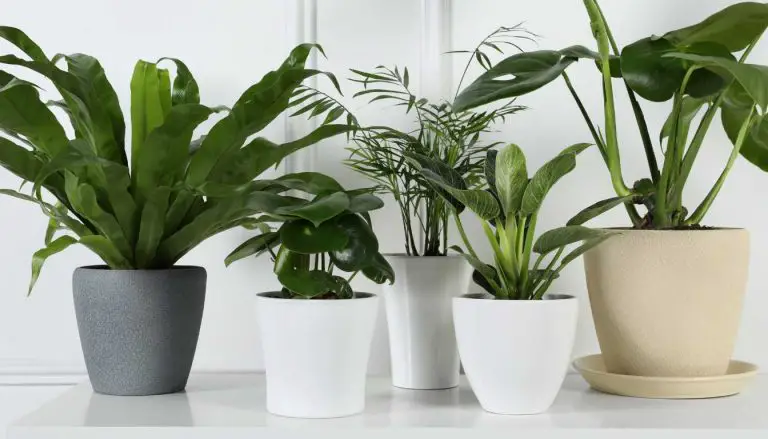How to Use Clay Pebbles for Houseplants: A Comprehensive Guide
Your indoor plants will not only look great with clay pebbles in them, but it will also be good for their growth and health. Clay pebbles have gained popularity as a substrate among lovers of indoor plants during the past few decades. You don’t need to regularly water the absorbent clay pebbles as you would with soil.
Clay pebbles have a great appearance and are fungus and rot-free, which helps the plant grow. In addition, insects have difficulty surviving in clay pebbles because they are made of inorganic material. The purpose of this article is to discuss how to use clay pebbles for houseplants and the advantages of using clay pebbles for houseplants.
What Exactly Are Clay Pebbles?
In container gardens and hydroponic agriculture, clay pebbles are used as a growing medium. Nutrient-rich water is used in hydroponic farming to replace soil. Clay pebbles are needed because plants need a medium for their roots to thrive. Clay pebbles are reusable; however, they do not provide plants with any nutrients on their own.
In addition to clay pebbles, they are also known as aggregates, clay balls, clay pellets, beads, expanded clay, hydroton, leca ((Lightweight Expanded Clay Aggregate), and clay beads.
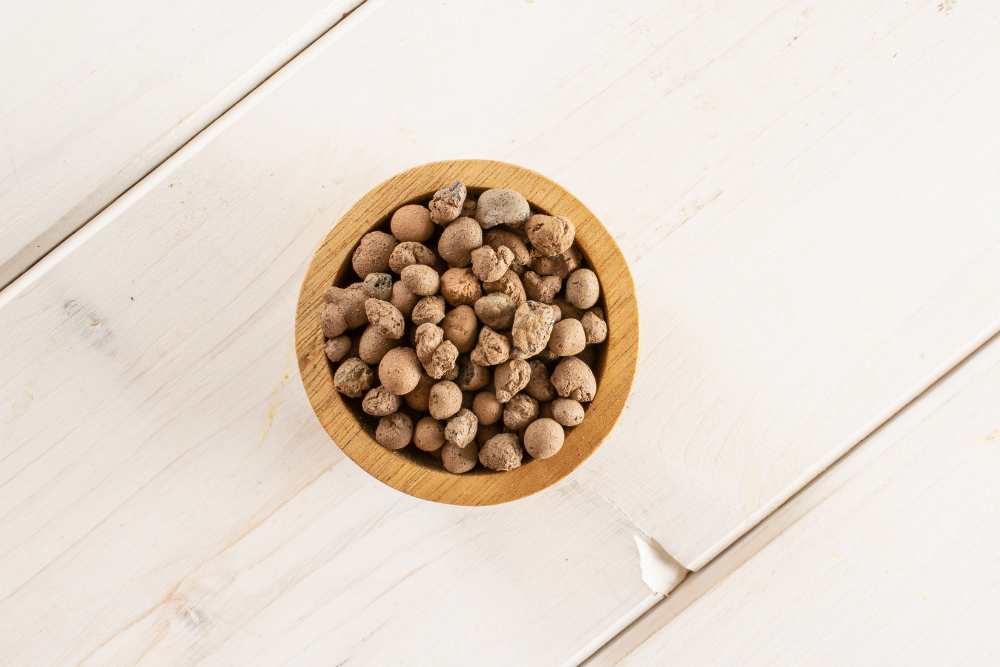
The pebbles’ bubbles are ideal for absorbing both air and water. Water can seep in and out of the porous, thin clay walls. What is the result? The shape and composition of expanded clay pellets make them excellent air moisturizers. The clay balls will lose water from their surface and let it into the surrounding air.
The deeper water inside the clay ball will leak to the surface due to capillarity, allowing evaporation to proceed. Clay pebbles are constantly accessible in garden centers. Since they improve water retention and drainage, they are frequently employed as a cool mineral mulch and in addition to soil mixtures.
Can You Mix Clay Pebbles With Soil?
You can mix your growing materials even though leca and other types of clay pebbles are often used alone for plant growth. Mixing clay pebbles with soil is like mixing half and half; you aren’t quite growing in stones, but you are benefiting from their advantages!
Mixing clay pebbles with your soil can assist your potting mix drain better since large particles in potting soil will help to aerate the soil. Soil provides nutrients that pebbles do not; if you combine your clay pebbles with soil, you won’t need to bother about adding extra nutrients.
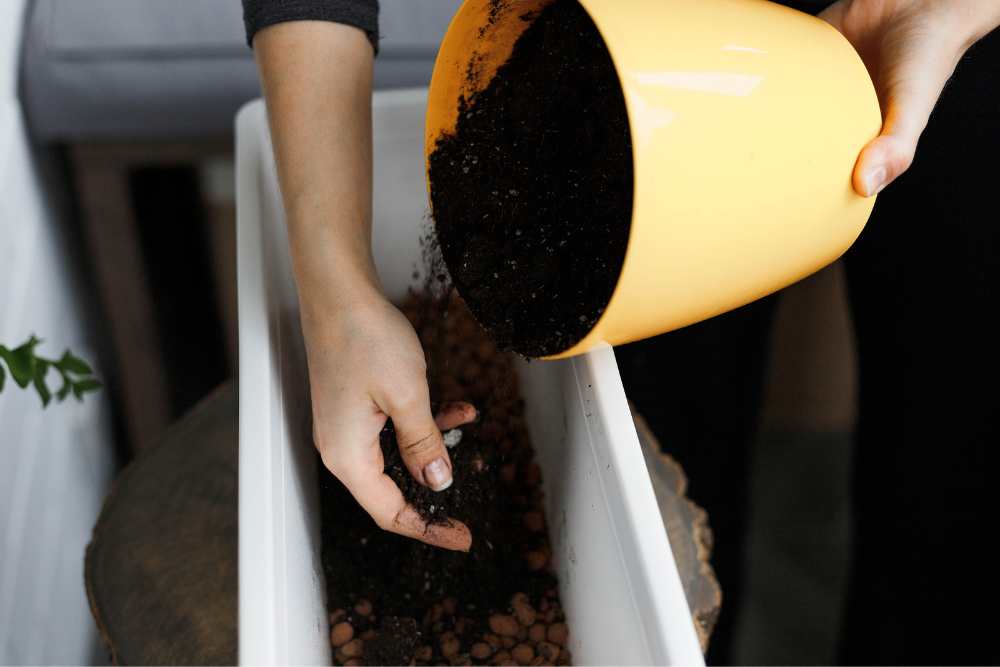
If you grow exclusively in pebbles, you will need to supplement your plants’ food, but if you utilize a combination of both, you get the best of both worlds! Start by incorporating clay pebbles into your current potting soil if you are new to growing in this medium. This will enable you to learn how the pebbles function without immediately switching out the entire growing medium for your plants.
Do Clay Pebbles Hold Water?
One of the numerous advantages of employing clay pebbles is their ability to hold onto the water after being soaked in it and release it only when the plants actively “drink” it. Plants that don’t want to be overly wet can benefit significantly from using these pebbles as a growing medium. The plants will use their roots to draw the water from the soil once the pebbles have absorbed it.
As a result, the plants have much more independence and will only use the water they need from the water-soaked pebbles. You should soak your clay pebbles for many hours to allow them to absorb the most water, which will then be distributed to the plants.
Be sure to check the moisture level in your pebbles, depending on how thirsty your plants are; you might need to soak them once more sooner than you think. Since the minerals in tap water might stick to the pebbles and reduce their absorption capacity, it is worthwhile to try soaking your pebbles in rainwater instead.
Benefits of Clay Pebbles Over Other Sources
You would prefer to utilize extended clay pebbles for horticulture farming for several reasons.
– Sterile
Expanded clay pellets are long-lasting, but they won’t truly feed the plant. They are mostly used as containers for the other food that is given to your plant because they have no nutritional value. Because of this, they support the plant’s growth by keeping insects and bacteria at bay.
– Water drainage
The way it helps to drain excess water appears to be the most appealing aspect; however, they also preserve adequate food to ensure regular supply to the roots.
– Simple To Harvest and Transplant
Hydroton doesn’t stick because it is a pellet-like substance. You won’t have any trouble When removing the plants or seedlings from the grow pots.
– pH Balance
The current soil being utilized in the garden will not be impacted by this. You don’t need to worry about its effects when combining it with any plant solutions or foundation you require for your garden. These pellets are a cheap approach to making nutrients last longer.
disadvantages of clay Pebbles
– Expensive for large growers
Clay pebbles are an incredibly simple substance for hobbyists and small growers, but it is not economically viable for large-scale or commercial production.
– Clay-related dust
The dust from these pellets can float unless they are thoroughly cleaned and soaked. It may also clog the drain lines in your system.
– Drainage
The most obvious drawback of clay pebbles is also one of its advantages. This material can dry up extremely quickly due to how well it drains. Just keep that in mind if your plants do not receive a steady supply of nutrients and water. It’s not a big deal.
– Insects and Pests
Scale insects, thrips, and red spider mites will be attracted if the clay pebbles are cleaned infrequently. To prevent this problem, you should disinfect the pebbles or replace them frequently.
– Fewer Fertilizer Options
Organic soil benefits most from regular fertilizing. As a result, your clay pebbles media will require a specific nutritional solution.
Clay pebbles don’t have any nutrients because they are inorganic, unlike soil. Therefore, adding fertilizer is the only method for your indoor plant to obtain crucial nutrients. The plant’s isolated micro and macronutrients are present in the liquid fertilizer solution. Check the pH of the water before you water your plant because some vitamins and minerals can only be absorbed by plants at a certain pH. Use a pH-balancing solution to increase or decrease the water’s acidity for hydroponic structures.
How To Use Clay Pebbles For Plants
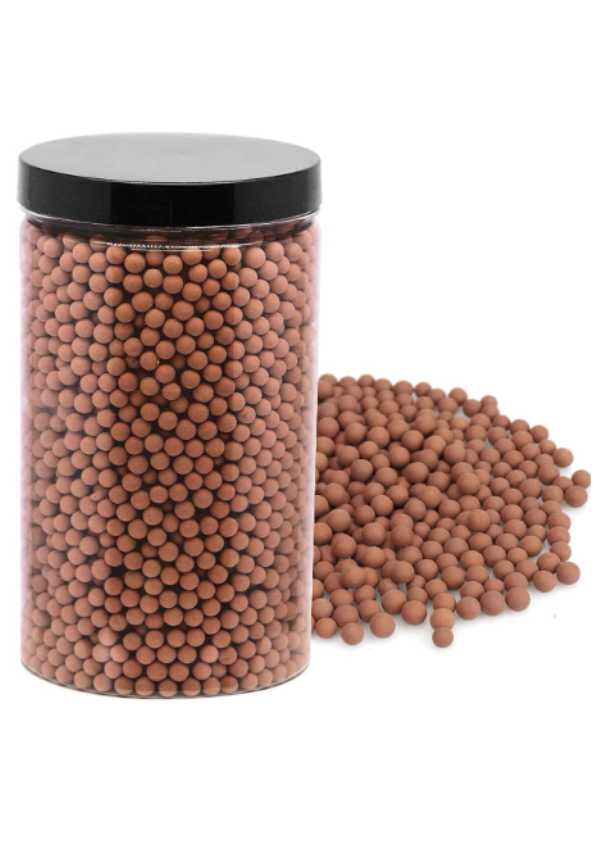
Medium For Plant Growth
As a growth medium for indoor plants, clay pebbles can be used in place of soil. On the other hand, clay pebbles are less messy and have a neutral pH, making them the ideal substrate for houseplants. Additionally, the clay pebbles give indoor plants the ideal combination of air, moisture, and food.
But unlike organic potting soil, clay pebbles don’t give the plant any nutrition. In order to avoid this, you should personally add the nutrients to the plant. In this instance, the clay balls will allow the plants to absorb the nutrients. That’s cool. Fortunately, following these simple instructions, you may cultivate indoor plants without soil using clay pebbles instead.
- Step 1: Thoroughly rinse the clay balls and soak them for 12 to 14 hours to allow them to absorb the water completely.
- Step 2: Locate the plant you want, such as a propagated cutting. Pull soil-grown plants out of the ground and gently scrape the dirt off their roots.
- Step 3: Locate a transparent glass grow pot or hydroponic pot. In this manner, the roots of the plant can be seen.
- Step 4: Center the propagated plant in your pot after filling it halfway with clay stones. Add more clay stones to the surrounding area to hold the plant in place.
- Step 5: Fill the pot with distilled water slightly below the plant’s roots. If water is needed, it will first be absorbed by the clay balls before being supplied to the roots. The roots are kept away from the water in this method.
- Step 6: Position the plant in an ideal area with indirect lighting. Ensure the water has completely dried out before topping it off to prevent algae growth. Additionally, keep in mind to water the plant using water that is high in nutrients.
Propagate Houseplants
It’s not only simple but also enjoyable to propagate houseplants. A cutting’s roots will grow when it is planted, adjusting to the hydroponic environment and open-air system. Here is how you can begin;
- Step 1: Your preferred plant’s stem should be cut. Several leaves should be present on the stalk.
- Step 2: Fill the container to the top with nutrient-rich water before adding the plant cutting. The cutting will grow roots by absorbing moisture from the clay stones.
- Step 3: Use a gentle fertilizer that cares for the health of the roots for a soil-to-clay pebbles transition. The roots can grow strongly due to the reduction of transfer shock.
Read – Mastering Indoor Plant Cuttings
Use clay pebbles to increase humidity
Clay pebbles can be used to increase humidity levels for plants that demand greater humidity levels. Ferns, spider plants, Fiddle fig plants, Peace Lily, and Prayer plants are a few examples of plants that exhibit this preference. For this stage, put the water-filled vase or pot with the clay pebbles inside of it. Due to their great absorbency, the clay balls will raise the humidity in the plant.
To maintain the desired humidity, don’t forget to regularly clean the clay pebbles and top them off with water. Additionally, the clay pebbles shield the plant from coming into direct touch with water, which could cause root rot. However, if the plant is thirsty, the root will begin to expand toward the water at the vase’s bottom and immediately absorb liquid.
Apply as a Dressing For Topsoil
Use clay pebbles as a topsoil dressing to protect your indoor plants. The stones control moisture levels and lessen the chance of pests attacking your indoor plant.
Due to their preference for landing and laying their eggs on organic materials, gnats are particularly susceptible to clay pebbles. Because clay pebbles are inorganic, it also interferes with the pests’ reproductive cycle, stopping an outbreak from happening.
The houseplants become more elegant when the topsoil is covered with clay pebbles, which also gives a decorative touch. The plant’s roots are protected from extreme heat and thermal shock by adding clay pebbles to the top layer of the soil.
Used as a Drainage Method
The drainage of plants can be greatly improved by using clay pebbles. Usually, adding broken terracotta or clay pebbles will improve drainage and aeration, preventing root rot. Before adding the potting soil to your houseplant, add around 2 inches of clay pebbles to the pot.
Alternatively, you might include clay balls in your potting soil to increase its capacity to retain moisture. We advise using clay pebbles for plants that dry out quickly before the next watering.
Use the hydro stones as well if your schedule prevents you from giving the potted plants the proper amount of water. Aqua clay balls have a high level of aeration, limitless root growth, and quick drainage due to their small size and rounded form.
Additionally, inorganic clay pebbles are less susceptible to algae, bugs, and other plant diseases than other substrates.
- 29 Bucket Gardening Ideas for a Lush, Compact Garden - October 30, 2024
- 20+ Chic Boho Bedroom Ideas for a Cozy and Stylish Retreat - June 20, 2024
- 12+ Modern Boho Living Room Ideas to Create a Unique Oasis - June 10, 2024

